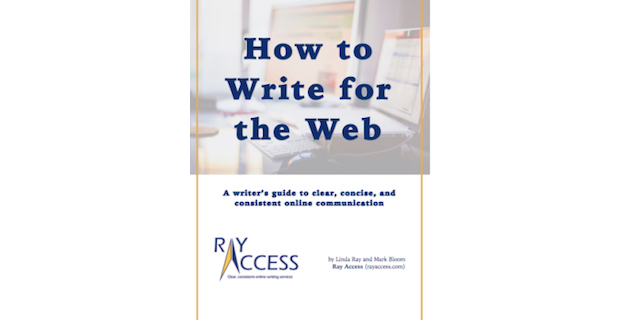by Mark Bloom | Feb 20, 2018 | Editing
The Nuts and Bolts, Tips and Tricks of Editing
See Part 1 of this series to understand why editing plays such a vital role in the writing process. Good writing, after all, is basically good editing – even though editors get so little of the glory.
See Part 2 of this series to get a glimpse of the various roles an editor plays in the formation of everything from a blog post to a full-blown novel. Choose one or all of the roles.
How Do You Become an Editor?
Now that you have a number of reasons to become an editor and you know the various levels of editing, it’s time to discuss some of the nitty-gritty details. Like writing, editing is a craft you can learn best by doing.

A few journalism programs still exist in universities around the country, though most don’t have a course of study dedicated to becoming an editor. The best way, and one that most professional editors find works extremely well, is to find a mentor, someone willing to:
- Teach you how to edit
- Coach you for a period of time or through a specific project
- Evaluate your work honestly
- Continue to be available when you have questions or just need one more set of eyes
Getting Down and Dirty
Books on the topic help you learn many of the basics when you want to become an editor. They certainly guide your work, teaching you how to proof content for correct grammar and an appropriate style for the particular piece you’re working on. But there’s nothing like getting your hands dirty with a piece of writing.
Every project you edit is going to be a little different because every writer has different strengths and weaknesses. Some problems you may come up against include:
- Writers who tend to use the same words over and over
- Writers who go off on tangents that don’t support the primary purpose of the project
- Foreign writers who aren’t familiar with connotations, contractions or colloquialisms
- Writers who use too much alliteration
- Writers who fall in love with every word they’ve written
Dealing with Writers
When you become an editor, you work directly with writers. You have to know how to appease them, speak to them and even coddle them. Some writers are easy to work with; they’re eager for advice to make their writing better. Others fight every step of the way.
One approach is to offer suggestions, giving the writer the final say in every decision. For this approach, using Track Changes (in MS Word), Suggestions (in Google docs) or a similar software tool allows you to leave a trail of changes that the writer can follow. The writer, when reviewing the edited work, decides whether to accept each change or not.
This isn’t always easy. You wanted to become an editor to make writing projects better. But just as writers have to let go of their words, sometimes you have to let go of your corrections. Making suggestions instead of hard edits also means more work for you, since you have to justify every major change.
Stating Your Case
Some of your edits are likely to be like no-brainers: poor word choice, incorrect grammar and leaps of logic that seem to come out of the blue. It’s your job to make sure the writer recognizes that your change makes the writing better. You can:
- Leave comments.
- Make notes.
- Be clear about why you made the change or why you requested a revision.
- Suggest ways to fix a problem – providing choices usually gives the writer something to grab onto.
Notes and comments may be the most meaningful, as you can fully explain an issue and provide suggestions for fixing it. You can leave comments no matter what type of technology or tool you use. Even if you’re editing with a red pen, leaving a comment helps you state your case for a change. It is, after all, the reason you chose to become an editor: to educate and ameliorate.
Manipulating Style
When you work with a good writer, most of your edits may come by way of stylistic changes. The most difficult task in writing is connecting with readers – especially in rhetorical writing, where the goal is to persuade readers to consider or take action on a specific topic. The best way to do that is to speak their language.
That’s why editors, like writers, must recognize what drives their intended audience. In this role, you represent the reader; you’re their first and last spokesperson – if you don’t stand up for them, no one else will. This is where editors can really shine. This is where the red pen is mightier than a pair of scissors.
A piece of writing has to be clear, concise and engaging to win over readers. Is it? Does it work? It’s up to you to determine. After all, when you’ve become an editor, you are the expert.
Ray Access is a content marketing firm that delivers targeted words to empower your business. Contact us about your specific project to receive a quote or discuss your needs. We write website copy, blog posts, e-newsletters and more. Everything we do is thoroughly researched, professionally edited and guaranteed original.
by Mark Bloom | Feb 13, 2018 | Editing
Three Ways to Help Writers Hit Their Messages
Read Part 1 of this series, if you haven’t already, to catch up on a few of the reasons it may be difficult to find a direct path to becoming an editor. Part 2 covers the different kinds of talents you need to become an editor. And Part 3 gives you some ways to reach your goals.

To become an editor, you must be able to take a piece of writing that already exists … and make it better. While the purpose of each piece of writing may vary, it doesn’t matter whether it’s a blog post, a newsletter article, a short story or a novel – it’s the editor’s job to make the writer’s work reach its intended audience with the right impact or angle.
There are three ways in which an editor helps the writer succeed. These three levels of editing are based on:
- The writing project’s current stage of writing, per the writer
- The editor’s assessment of the project’s needs
- Ultimately, what the writer and editor agree to focus on
Become an Editor Who Offers Choices
Working with a writer can be a touchy situation. Writers are notoriously attached to their work. They’ve sweated over the details, wracked their brains to find the right words and poured their hearts into the writing. Criticism may even frighten them.
But approach writers with positive energy. You’re not there to destroy; you’re there to improve. Let the writer feel in control. And the best way to do that is to offer choices. Ask for a sample of the work and devise a plan to offer one or more of these three levels of editing:
- Developmental editing
- Copy editing
- Proofreading
Developmental Editing
Developmental editing is a service usually performed near the very beginning of the project. Editors who can offer this service are in the highest demand because it’s a very specific talent. This is when you work with the writer to determine:
- Who’s the intended audience?
- What’s the purpose of the piece?
- What are the most appropriate tone and language to use?
- What’s an appropriate length for the piece?
- What’s the ideal structure for the writing? Should it be written in newspaper style, dramatic style, academic style or something else?
Delve into the answers until you’re satisfied that you share the same goals with the writer. Make sure she understands each point, because the answers to these questions greatly influence the writing. When the first (or second) draft is complete, you’ll be evaluating the writing according to how closely the project hits its goals.

Copy Editing
At this stage, a complete draft of the project already exists. Your job as editor, during the copy-editing phase, is to ensure that the writing flows eloquently and logically from point to point, from sentence to sentence and from section to section. When the writing is good, you have little work to do, but when there are problems, you may have to:
- Question word choices
- Move words, sentences, paragraphs or whole sections around
- Delete words, sentences, paragraphs or whole sections
- Request more information or expanded content in specific areas for specific purposes, which you must identify and convey
The point of this exercise is not to change the writer’s voice necessarily, but to make sure the piece hits its goals as identified in the developmental stage. You also need to make sure it’s easy for the intended audience to read. The danger here is inserting your own voice – intentionally or not – into the writing. You aren’t the author, and the writer has her own style. But the piece has to work.
Proofreading
This level of editing is the least intrusive and the least time-consuming. It involves reading through the piece of writing, only looking for typos, spelling mistakes and grammar errors. You don’t have to be concerned with flow, readability or word choice. It’s simply a final check before the writer can submit the piece, either for publication or approval.
While there are professional proofreaders who do nothing else, to become an editor, you must know how to proofread. And you should offer this service, not because no one else can do it, but because with proofreading, you can offer the full range of editing services.
Become an editor who knows how to do all three levels of editing. Become an editor who knows which service to perform for each piece of writing and who provides the best service to your writing clients. And remember: editing isn’t just about making a particular project as good as it can be; it’s also about making the writer as good as she can be.
Ray Access is a content marketing firm that delivers targeted words to empower your business. Contact us about your specific project to receive a quote or discuss your needs. We write website copy, blog posts, e-newsletters and more. Everything we do is thoroughly researched, professionally edited and guaranteed original.
by Mark Bloom | Feb 5, 2018 | Editing
Going with Your Gut Isn’t a Defensible Strategy
If you want to become an editor, you have to find your own way. There’s no advanced degree program. You won’t find many mentors out there to apprentice with. In fact, depending on who you ask, there apparently isn’t any clear path into the profession.
In addition, there are few jobs with the title. You can become a magazine editor, a newspaper editor or a book editor. You can become an editor who does freelance work, but the pay is as low as the demand.

Yet editors play a vital role in shaping stories, schooling writers and making the world a more comprehensible place. This three-part series delves into the nuts and bolts for people who want to become an editor.
Who Wants to Be an Editor?
So, if demand for editors is low, why become an editor at all? It takes a special breed of person – a cross between a word nerd and a personal trainer. You need to know all the rules, and you have to know when it’s OK to break them. You have to be able to work directly with writers (not the easiest bunch to corral) and lead them to heights even they didn’t realize they could reach.
It’s a myth that editors are failed writers. Many editors are also writers. It’s also a myth that all editors are (or were) English majors when they earned their Bachelor of Arts degrees. What is true is that, to become an editor, you need:
- A Bachelor’s degree in something (not necessarily English), because you need a solid educational foundation
- An ear for language, which is why native speakers make the best editors
- Knowledge of all the grammar rules
- A passion for language, which goes above and beyond grammar rules
- Lots of experience in – and a love of – reading
- A comprehensive vocabulary
The Best Way to Learn Editing
Obviously, experience is the greatest teacher, but what if you have no experience, but still want to become an editor? What do you do then? The short answer is to prepare. Read a lot, especially the types of writing you want to edit. Establish a relationship with a working editor and pick her brains. There are some good books on editing that are worth reading, such as:
- Self-Editing for Fiction Writers by Renni Browne and Dave King
- The Forest for the Trees by Betsy Lerner
- Revising Fiction by Davis Madden
- 100 Ways to Improve Your Writing by Gary Provost
- The Elements of Style by William Strunk and E.B. White
And there are many books on writing that can help you become a better editor, too. Everyone from Ray Bradbury to Stephen King has written books on writing. But don’t forget Writing Fiction by Janet Burroway and Stein on Writing by Sol Stein.
Editing Fiction or Nonfiction
You may notice that many of the recommended titles above focus on writing fiction. While there are some differences between writing and editing fiction vs. nonfiction, there are more similarities than you may realize. That means you can learn a lot about editing nonfiction by learning how to edit fiction.
It all comes down to audience, purpose and approach. There are techniques good editors use to achieve all three, while guiding writers to improve their craft for their next project. And that’s the area where editors resemble coaches: they’re not just concerned with the current project – whether it’s a novel, a magazine article or a blog post – but they also care about writers and helping them improve.
The next installment details the three different kinds of editing that you have to understand if you want to become an editor – and the skills involved with each type. In the meantime, if you need editing, hire the team at Ray Access.
Ray Access is a content marketing firm that delivers targeted words to empower your business. Contact us about your specific project to receive a quote or discuss your needs. We write website copy, blog posts, e-newsletters and more. Everything we do is thoroughly researched, professionally edited and guaranteed original.
by Mark Bloom | Jan 22, 2018 | Website Content
Website Pages Have to Connect with Visitors
Everyone in the internet industry has their own opinion about what makes effective content for a website. Some SEO experts have insisted that, to rank high, a web page needs at least 1,000 targeted, carefully crafted words on a particular subject. Others have put the number at 800. Still others claim that length doesn’t matter at all.
Of course, the use of keywords still counts in website content writing — at least until artificial intelligence makes them obsolete, a day that is getting all too close. But there’s more to writing engaging website content than relying on multiple keywords. And keyword stuffing is a bad practice anyway. (So use keywords, but don’t overuse them.)

But that’s still not the answer, since keywords are designed only to attract people to your website. Once they’ve arrived, keywords are unnecessary and superfluous. Something more is required if you want an effective website.
What Website Content Writing Is Supposed to Do
The Holy Grail of websites is persuading visitors to take action. That’s it, really. The conversion of a website visitor into a customer begins with a single mouse click. When people find their way to your website, which is in itself a remarkable feat, the website’s goal is getting them to:
- Want to learn more, which means visiting other pages on your website
- Contact your company through a contact form, a phone call or an email
- Sign up for your newsletter to stay in touch and maybe get special deals
- Order your product or service, ideally, but that rarely happens on the first visit
If your website content connects with visitors, it’s done its job. It’s generated a sales lead. The rest is up to you and your team.
But What’s the Best Way to Engage Visitors?
Now it gets down to the nitty gritty of websites. What separates the websites of successful companies from those of less successful companies? It’s all about engagement, getting visitors to stay on your website longer because they want to, because you’re giving them what they’ve been searching the internet for. And this is the crux of the best website content writing tip you’ll ever read.
This tip involves three parts:
- Know your audience. You have to know who you’re trying to attract with your website. You’re in business to serve your customers. You have to know who they are. Define your demographic and develop some personas.
- Understand what they want. When this target group of people come to your website, what is it they’re looking for? Information? Your phone number? Tips about your industry, products or services? You have to know what they want and make it all easy to find. That’s part website design, but it also involves good website content writing.
- Deliver it all in a responsive way. Even if you satisfy the first two requirements, if you don’t nail this one, your visitors click away to find your competitors who are doing all three. This is where presentation matters. This is where language matters. This is what so many businesses get wrong.
The Ray Access Vision for Website Content Writing
One of the factors that sets Ray Access projects apart from the rest of the internet — in addition to the careful editing process we employ — is the language and tone of the websites we write. It’s not enough to present clear, concise, easy-to-find information on your website, although that certainly helps make a website inviting.
To bring it home, you have to present your information in a way that speaks to your visitors. It’s an important distinction that demands a careful choice of words. Don’t use stilted language and passive voice. Write your website like you’re talking to a friend — because that’s what you want your website visitors to become.
Detailed Advice
Explain unusual or industry terms that come up because you know people will ask. Write in simple sentence structures and short paragraphs. Break up your page with easy-to-scan headings and relevant images. These things help people read and find what they’re looking for.
Short sentences and short paragraphs make a page more readable, more person-friendly. Concise words and phrases engage readers who are interested in the subject as well as readers who are new to your site. Simple website content writing — which is often the most difficult way to write — is the most engaging. Content that connects with your visitors gets readers to make that one click that matters most: on the Buy Now button.
Ray Access is a content marketing firm that delivers targeted words to empower your business. Contact us about your specific project to receive a quote or discuss your needs. We write website copy, blog posts, e-newsletters and more. Everything we do is thoroughly researched, professionally edited and guaranteed original.
by Mark Bloom | Jan 9, 2018 | Writing
The Joy of Writing Exists, But Not for Everyone
Among writers, both amateur and professional, there’s a common saying that’s built on half-truths and lazy innuendoes. The paraphrased saying goes like this: “It’s much better to have written than to be writing.” The insinuation is that the act of writing, of putting words into a document one after the other, is no fun at all. so how can there be a joy of writing?

Businesspeople who don’t consider themselves writers certainly agree. Writing for them is a sisyphean task. One simple blog post can take hours on end, hours better spent doing anything else — even accounting. And the end result may turn out to be a fragmented account of a semi-satisfied customer. In other words, all that effort produced something of little or no value.
The Joy of Writing for Writers
People who identify themselves as writers — and that may include you — usually find some satisfaction in the act of writing. For some, an original turn of phrase is what kindles that warm, glowing feeling. For example, we once wrote a blog post for a client about mountain biking on steep and dangerous terrain. In writing that article, a phrase appeared, as if by magic, a phrase that became the title of the piece: “Trails and Tribulations.”
For others, the joy of writing occurs during that period after the start, when a blank page gradually gets filled with a first draft. This is the euphoria we’re feeling while writing this blog post right now! Then there are those whose joy comes only at the end. The accomplishment, having written, imbues the writer with that warm, glowing feeling. No matter where it comes, all writers chase that feeling like spiritual seekers after enlightenment. It can become all-consuming.
Writing Is Hard Work
While everyone with a high school diploma can write, the art and science of writing a coherent story, essay or article takes work. Finding the right word, to paraphrase Mark Twain, means the difference between lightning and the Tampa Bay Lightning. And then there’s the grammar, spelling and punctuation to deal with.
Additionally, when writing something for your business, you may need to do some research to make sure you get your facts straight, and many people haven’t had to do research since their college years. But you can’t just publish anything. Your customers may see it, find an error or get the meaning wrong, and suddenly, your painstakingly written article is going viral for all the wrong reasons.
Get Help from Real Writers
If the joy of writing actually exists, then good writers actually feel it. If you’re struggling with a writing task, you need to find one of these magical creatures to do your writing for you. Your joy of writing may come from delegating the whole task. And that’s OK. Just as there are accountants to handle your books and plumbers to fix your leaks, there are writers to produce your content.
But you’ll find a big difference between hiring a plumber and hiring a writer: A plumber can save you money by protecting your home or office, but a writer, a real writer who lives for the joy of writing, can actually make you money. If your blog posts are engaging, informative and thought-provoking, your customers will read them. If your website is direct and helpful, readers will actually contact you about your products or services.
Let someone else fret over the right word choice and revel in the placement of a comma. Let someone else craft perfect sentences that speak directly to your audience with style, wit and erudition. It won’t even cost that much. Meanwhile, you get to go back to doing what you do best: satisfying the customers you already have.
Ray Access. We’re here when you need us
because good online content can make the difference
between a sale and a fail.
Ray Access is a content marketing firm that delivers targeted words to empower your business. Contact us about your specific project to receive a quote or discuss your needs. We write website copy, blog posts, e-newsletters and more. Everything we do is thoroughly researched, professionally edited and guaranteed original.
by Mark Bloom | Dec 25, 2017 | Small Business Advice
The Only Way to Receive Is to Give Generously

Since it’s the season of giving, we thought we’d share this little bit of wisdom: you have to give to receive. It’s cliché, but like all time-honored sayings, so very true, and especially timely during this season of giving. You know it’s true. And it’s easy to come up with examples:
- To attract holiday shoppers, you might have to give away a discount.
- To get good karma on your side, you need to do good deeds.
- If you want people to be nice to you, you have to be nice to them first. You have to give kindness to get it.
- To get a paycheck, you have to give a good day’s work.
- The first point of attraction is your smile. You have to take a chance and project your smile out into the world if you hope to receive a smile back.
You could apply this concept to any endeavor and every activity. If you bring nothing to the table, you’ll often leave it empty-handed. But if you join in a lively conversation with insight and regard, you’ll learn something new or meet someone new.
Give with an Open Heart
While giving to receive is a popular sentiment these days, your intention matters a great deal when you set out to give. Now, we’re not implying that it’s better to give than to receive, although we believe that. But don’t just give — give of yourself. Share your presence, not just your presents, and the world will respond.
And while giving inherently is its own reward, we do believe that what goes around comes around. Even when you give with no thought of what you’ll get in return, you’re often rewarded from some other source. It’s strange how it works, but it does work.
The Season of Giving for Businesses
It’s the same with your business. You don’t have to give away your trade secrets just to drum up customers. But give away your insight. Give freely of your industry knowledge, no matter what industry you’re in. Educate your clients, and they’ll become more discerning buyers.
Everyone faces choices when they want to buy, whether it’s a product, a service or an adventure. If you’re selling products, services or adventures, you can provide inside information to help people make better choices. Here are some examples:
- If you’re a plumber, explain the pros and cons of all the different varieties of water heaters.
- If you sell auto leases, definitely share all the ways you can help car shoppers.
- If you’re a medical specialist, share insights into your experience with keeping your patients healthy.
Share Your Knowledge in a Blog
It doesn’t have to be the season of giving for you to give away advice, tips and insights. When you blog on your business website, you can share every week or even more often. That’s what we do here at Ray Access with this blog. It’s what you can do on yours.
Blogs reach out to people searching for answers. The people you attract are already interested in your goods, services or adventures. Whatever your business does, you can share information about it to educate your customers. Do it for free. Make it valuable. Give of your knowledge, and people will remember. What goes around, comes around.
Happy holidays from your writing and editing friends at Ray Access, where it’s always the season of giving.
Ray Access is a content marketing firm that delivers targeted words to empower your business. Contact us about your specific project to receive a quote or discuss your needs. We write website copy, blog posts, e-newsletters and more. Everything we do is thoroughly researched, professionally edited and guaranteed original.
by Mark Bloom | Dec 12, 2017 | Agency Advice
Businesses Look to Web Developers for Advice
Your clients spend thousands of dollars to design and develop an attractive, effective website. They spend hundreds more a month on search engine optimization. Commissioning a website from scratch — or even a website redesign — can be a significant capital investment. And it’s especially true for small businesses. That’s why they need a blog.

So it’s vital that businesses get it right. Design, functionality and content all play important roles in how effective a website is at engaging visitors. And the website needs to show up in searches to draw traffic. That’s SEO’s job — and while fresh content doesn’t replace SEO, it does make SEO work better. Adding blog posts on a regular basis engages your audience and brings more people to your website. That’s also why they need a blog.
Business Websites Need a Blog
By adding a blog to their websites, your clients actually accomplish two things:
- Builds depth and breadth to their website, which gives visitors even more useful information about the company, industry, products and services.
- Provides more keywords for search engines to find, which allows them to point more (and different) searches back to the website, potentially capturing more traffic.
A website by itself can only do so much. There’s the landing page (or Home page) and the About page. There are pages for each product or service, as well as pages for related information. But the website you build for your client can’t cover every conceivable way their products or services are better. It can’t deliver every possible benefit the company offers. That’s why your clients need a blog.
It’s Up to You
As the internet expert for your clients, it’s up to you to advise them how to get the best results from their new websites. You may offer SEO services or recommend agencies that offer it. In this competitive era, SEO is a required service for businesses that want to gain attention by ranking high in searches.
And that’s the same reason to recommend to your clients that they need a blog. Blogs reach out to their customers to offer information and tips, not deals and promotions. That’s advertising. The saying “an educated consumer is the best consumer” holds true online, too. Blogs fill that niche.
How Blogs Work
The reason your clients need a blog is to indirectly capture related keywords and topics that don’t currently exist on their websites. Blogs increase the variety of keywords and topics their websites cover, and that can be as broad as they want. Let’s say the business is located in Asheville, NC. If the website features a blog post about the fun things to do in Asheville or the benefits of working in Asheville, that post may find an audience beyond the narrow target market.
That one blog post may make the website more popular, bringing more people to the website. Once there, visitors may look around to see what else the website has to offer. It’s a benefit to the business and to the visitor, if the interests align.
Value Above and Beyond an Online Storefront
Not all business websites directly sell products online. Some websites are marketing tools geared to get visitors to contact the company, either through a phone call, an email or a contact form. That’s the beginning of a relationship that may end in a sale. That’s the ultimate purpose of a website.
If your clients’ websites aren’t working for their businesses, they’ve just wasted a bunch of money. If they’re not happy with their website, they won’t be very likely to use your agency again or recommend you to others. If you recommend that they need a blog, they’ll benefit from the exposure and you’ll benefit from their success.
Ray Access is a content marketing firm that delivers targeted words to empower your business. Contact us about your specific project to receive a quote or discuss your needs. We write website copy, blog posts, e-newsletters and more. Everything we do is thoroughly researched, professionally edited and guaranteed original.
by Mark Bloom | Nov 14, 2017 | Agency Advice
Be Clear and Targeted to Make Websites Better
If you’re a web developer, a website designer or an SEO marketing specialist, very often, you have a tough job explaining to your clients all the variables involved in your work. You have to weigh many factors to make those mission-critical decisions. Your work has to satisfy your client — and sometimes, their customers as well. But that’s why you’re the expert in your field: you know how to separate what’s important from what’s not.

So how can you make websites better? How can you deliver value and performance so outstanding, the word-of-mouth buzz will have new clients lining up for your services? It’s simple: don’t overlook the importance of words on the page.
Beyond Driving Traffic
Most web professionals are justifiably obsessed with directing internet traffic to your clients’ websites. Traffic shows that your marketing efforts are working. They are numbers you can rely on and show your clients to prove your worth. It’s an easy win.
But the real work is getting the right audience to your clients’ websites. While lots of traffic and page views are impressive, generating leads is more impressive. So, if you’re really concerned about how you make websites better, think about the user experience.
Make Websites Better with Good Content
To help your clients generate leads — and actually earn money from their website investment — sell them on the concept that good rhetorical writing can win visitors’ trust … and their business. Follow these six ways to make websites better:
- Organize the content in an easy-to-understand way.
From the top navigation down to the footer, websites need to be intuitive and consistent. If you make it easy for visitors to find their way around — and easy to get around — they’ll thank you.
- Use clear, concise language on your website.
As Steven Krug said, “Don’t make me think!” In other words, plain language helps website visitors know what the website is all about and where to find the information they’re seeking.
- Good writing is clear and informative.
Good online writing isn’t flowery (on one hand) or textbook dry (on the other). Good website copy speaks directly to visitors, as if engaging in a conversation. It pulls readers in and provides valuable information they may not be able to get elsewhere.
- Good websites provide value.
All websites have to provide useful information, delivered in a way visitors can understand. Sometimes that means step-by-step instructions. Sometimes, that means an infographic. Sometimes, it means imparting information simply, in as few words as possible. Match the information to readers’ expectations.
- Calls to action encourage engagement.
Sprinkle calls to action throughout your home page, in the sidebars and in the footer. Provide contact information and hours open (where applicable) in easy-to-find places. Provide value and valid reasons for contacting you. Remember, visitors always ask, “What’s in it for me?”
- Close with your kicker.
After you’ve educated website visitors by delivering a bunch of useful information, guide them through the virtual door to your office. Now that they better understand what they need or what’s involved with what they want, explain why they should buy from or hire you. It’s the perfect segue.
To make websites better, place valuable content on the pages you’ve created. It’s one thing to draw an audience; it’s another thing to keep them there. And that’s exactly what good website content accomplishes.
Ray Access is a content marketing firm that delivers targeted words to empower your business. Contact us about your specific project to receive a quote or discuss your needs. We write website copy, blog posts, e-newsletters and more. Everything we do is thoroughly researched, professionally edited and guaranteed original.
by Mark Bloom | Oct 24, 2017 | Agency Advice
Is It Just That People Read Differently Online?
Read Part 1 of this article, All Writers Are Not Equal, which explains why you need the right kind of writer for your agency.

Just like there are different types of writers for different kinds of online writing tasks, you need different types of articles to fulfill those tasks. You wouldn’t — or at least, you shouldn’t — use a blog post to sell your products or services. That’s not the purpose of a blog post. Each kind of online writing has a specific purpose. For example:
- A blog post is an informative or entertaining marketing article that aims to attract a large audience to your website.
- A press release announces exciting news regarding your company or your place in the industry, delivered to interested media for publication.
- An email newsletter is an infrequent (e.g., monthly) communication to your customers and other interested parties, with the goal to maintain brand awareness, provide relevant tips and offer special deals.
- A white paper is a document that states, in detail, your company’s position on a specific issue or proposes a solution to a particular problem. Its goal is to educate readers and influence decision-makers. These are also called long-form blog posts.
- A page on your company website explains a specific product or service. It also can:
- Establish your reputation
- Identify your target audience
- Build your brand
- Generate trust
- State your unique value proposition
- Push your advantages
- Sell your products or services
Do People Really Read Online Writing Differently?
When you sit down to read the newspaper or a magazine, you likely flip pages until you find a story that’s worth your time. You skim the advertisements, probably pass by the table of contents and focus on only what interests you. Unless you’re reading a book, you rarely read any hard-copy publication cover-to-cover.
The same is true, actually, when people read content online, except instead of flipping pages, they scan online writing to find what they’re looking for. They’ve arrived at your blog, your website or white paper for a reason: to learn something, find specific information or be entertained. They’ve opened your newsletter or your press release to find out what you have to say. Don’t disappoint them.
Big Blocks of Text Kill Reader Interest
When you open a book, you expect to find pages upon pages of writing. Maybe there’s an occasional illustration, table or graphic, but it’s mostly just words. Reading a book, in other words, takes a commitment to stick with it to the end. Online, with your competition just a click away, you can’t afford to hope for a commitment that readers will stick with the text until the end; you have to deliver the goods right away. There are two ways online writing differs from other writing:
- Formatting: it’s formatted in a way to enable easy scanning.
- Writing style: it’s written in a way to deliver value right from the start.
Formatting means breaking up your content into small paragraphs, short sentences and simple words. It means using lots of white space and subheadings every couple paragraphs. It means using graphical elements that add to your story or reinforce your point. It means using bold, italic and all-caps to effectively guide the readers’ eyes to the information you have to share.
The writing style has to answer questions and capture interest from the very first sentence. People read online writing, especially on business platforms like your website, to find information. Give them what they seek, and they’ll be back when they’re ready to buy. Influence their decision with value-added information like tips, tricks or news, and they’ll remember your business as a trusted resource.
Ray Access does all this for you, whether you need website content, blog posts, email newsletters, press releases or even white papers. Contact us for specific pricing.










